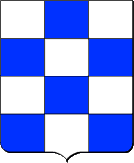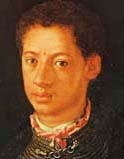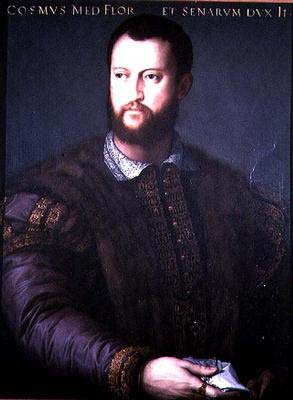
The Biography

 |
The Biography
|
 |
| Alvarez de Toledo | De Medici |
Prior to the death of Lorenzo the Magnificent in 1492, Florence was set up as a republican institution, with the Medici running the government. After Lorenzo's death his son, Piero de Medici was named successor of the government, but after allowing Charles VIII of France to take over control of Florence, the populace demanded a full democratic government without the Medici. The populace, spurred on by the fanatic, racist teachings of Girolamo Savonarola, reformed the democracy with new, strict rules governing sumptuary laws, racists slants, and "devout" teachings. When Savonarola had reached his tolerance limits with Pope Alexander VI in early 1498, he was declared a heretic and burned at the stake, thus allowing the Medici with permission of Pope to resume control of Florence. 2 more successive Medici popes reinforced the Medici rule in Florence, but with the sack of Rome in 1527, by Carlos V of Spain and the Holy Roman Empire, the Florentines, seeing the opportunity, revolted and declared themselves a republic.
In 1545, Bronzino, Court painter to the Duke and Duchess of Florence, painted the Duchess with her Son, Giovanni. The dress she was wearing had a very striking pattern made of black, white and gold velvet. The background appears to just be vivid blue, but is actually sky, with ground and water somewhat hidden in the back left of the canvas. There seems to be no accessories in the painting save her son.
What was Elenora like? Is what she was like how Bronzino depicted her? Was Bronzino using an existing painting sytle, or was it unique to him? How would thier backgrounds influence a recreation of the black, white, and gold gown? In order to answer these and other questions, I was going to need a background check on these two signifigant people.
_
 After a siege of 11 months, the Medici Pope, Clement VII and Carlos V entered Florence and declared the only surviving heir of Lorenzo's offspring, Alessandro as the Head of the Government. Illegitimate, and born of an African slave woman, Alessandro soon turned the ruling from head of government to single rule of Duke. His most significant contribution to history is his foreign policy by marriage. He married off his legitimate step sister Caterina, to Henri II of France, and took for a wife the illegitimate Margarita of Austria, daughter of Carlos V.
After a siege of 11 months, the Medici Pope, Clement VII and Carlos V entered Florence and declared the only surviving heir of Lorenzo's offspring, Alessandro as the Head of the Government. Illegitimate, and born of an African slave woman, Alessandro soon turned the ruling from head of government to single rule of Duke. His most significant contribution to history is his foreign policy by marriage. He married off his legitimate step sister Caterina, to Henri II of France, and took for a wife the illegitimate Margarita of Austria, daughter of Carlos V.
But not all was smooth in the ruling of Duke Alessandro. Filippo Strozzi and followers were trying very hard to overthrow the new Duke, but were ultimately unsuccessful. In a surprising turn of events, in 1537, Alessandro was assassinated by his cousin, Lorenzino de Medici, rumoured to be jealous of Alessandro's luck and success. Fleeing, without attempting to claim the dukedom for himself, the inheritable title of Duke of Florence passed to its only possible male survivor, Cosimo de Medici, son of Giovanni delle Bande Nere (John of the Black Band). Cosimo was the only surviving male of the younger branch of the Medici. However, his mother's mother was Lorenzo the Magnificent's sister. In a way, Cosimo was the blending of both the elder and younger lines of Medici.
 At seventeen the new duke managed to command respect and gradually installed an autocratic regime. In his lifetime he succeeded in crushing the adverse factions and reinforcing the state, bringing Siena under Florentine rule in 1555. He married Eleonora Alvarez de Toledo, a spanish noble who's family claimed royal ties to the Spanish Crown. Culturally, Florence flurished under Cosimo's rule. Jews seemed to be given better respect than other italian cities of the time; 2 univeristies were set up, young men confraternities sprung up, the Jesuits set up thier own convent within the city walls, painters, sculptures, and artists were employed all over the dukedom, orphanage conditions were improved, and ties with both France and Spain remained strong. In 1562, his wife died, and Cosimo unofficially turned over ruling of Florence to his son, Francesco, 2 years later. Cosimo obtained the sovereign title of GRAND DUKE in 1569 by Pius V. It was recognized a year later by Carlos V of Spain. When he died in 1574, Francesco, his eldest son, inherited the Grand Duke title and goverment, who reigned till 1587 when he was succeeded by his brother Ferdinando I (1587-1609).
At seventeen the new duke managed to command respect and gradually installed an autocratic regime. In his lifetime he succeeded in crushing the adverse factions and reinforcing the state, bringing Siena under Florentine rule in 1555. He married Eleonora Alvarez de Toledo, a spanish noble who's family claimed royal ties to the Spanish Crown. Culturally, Florence flurished under Cosimo's rule. Jews seemed to be given better respect than other italian cities of the time; 2 univeristies were set up, young men confraternities sprung up, the Jesuits set up thier own convent within the city walls, painters, sculptures, and artists were employed all over the dukedom, orphanage conditions were improved, and ties with both France and Spain remained strong. In 1562, his wife died, and Cosimo unofficially turned over ruling of Florence to his son, Francesco, 2 years later. Cosimo obtained the sovereign title of GRAND DUKE in 1569 by Pius V. It was recognized a year later by Carlos V of Spain. When he died in 1574, Francesco, his eldest son, inherited the Grand Duke title and goverment, who reigned till 1587 when he was succeeded by his brother Ferdinando I (1587-1609).
The Sitter
Painter